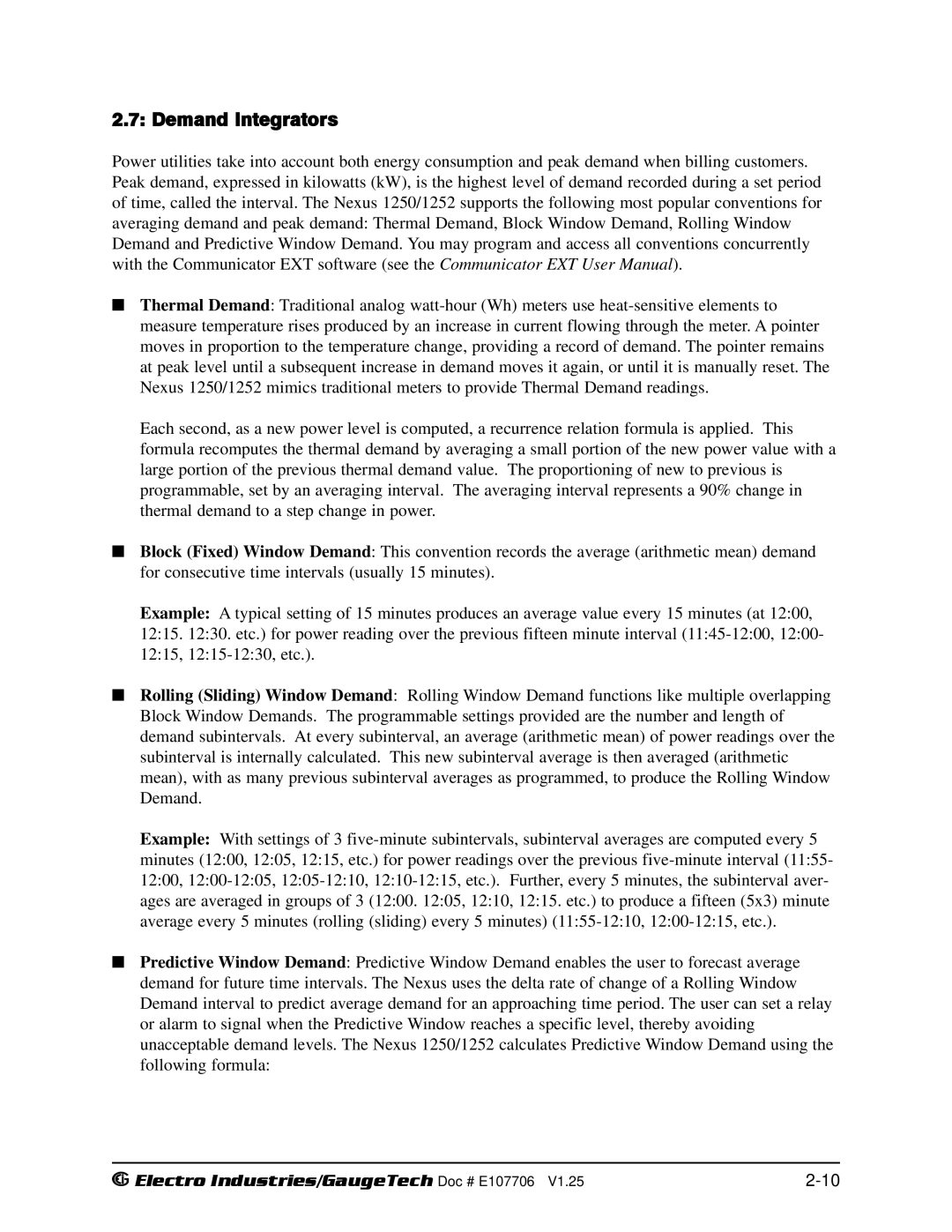2.7: Demand Integrators
Power utilities take into account both energy consumption and peak demand when billing customers. Peak demand, expressed in kilowatts (kW), is the highest level of demand recorded during a set period of time, called the interval. The Nexus 1250/1252 supports the following most popular conventions for averaging demand and peak demand: Thermal Demand, Block Window Demand, Rolling Window Demand and Predictive Window Demand. You may program and access all conventions concurrently with the Communicator EXT software (see the Communicator EXT User Manual).
Thermal Demand: Traditional analog
Each second, as a new power level is computed, a recurrence relation formula is applied. This formula recomputes the thermal demand by averaging a small portion of the new power value with a large portion of the previous thermal demand value. The proportioning of new to previous is programmable, set by an averaging interval. The averaging interval represents a 90% change in thermal demand to a step change in power.
Block (Fixed) Window Demand: This convention records the average (arithmetic mean) demand for consecutive time intervals (usually 15 minutes).
Example: A typical setting of 15 minutes produces an average value every 15 minutes (at 12:00, 12:15. 12:30. etc.) for power reading over the previous fifteen minute interval
Rolling (Sliding) Window Demand: Rolling Window Demand functions like multiple overlapping Block Window Demands. The programmable settings provided are the number and length of demand subintervals. At every subinterval, an average (arithmetic mean) of power readings over the subinterval is internally calculated. This new subinterval average is then averaged (arithmetic mean), with as many previous subinterval averages as programmed, to produce the Rolling Window Demand.
Example: With settings of 3
Predictive Window Demand: Predictive Window Demand enables the user to forecast average demand for future time intervals. The Nexus uses the delta rate of change of a Rolling Window Demand interval to predict average demand for an approaching time period. The user can set a relay or alarm to signal when the Predictive Window reaches a specific level, thereby avoiding unacceptable demand levels. The Nexus 1250/1252 calculates Predictive Window Demand using the following formula:
e Electro Industries/GaugeTech Doc # E107706 V1.25 |
